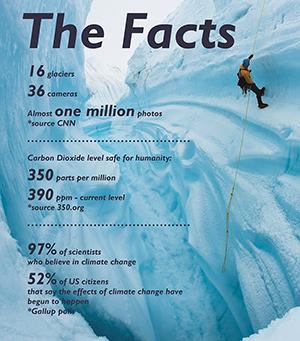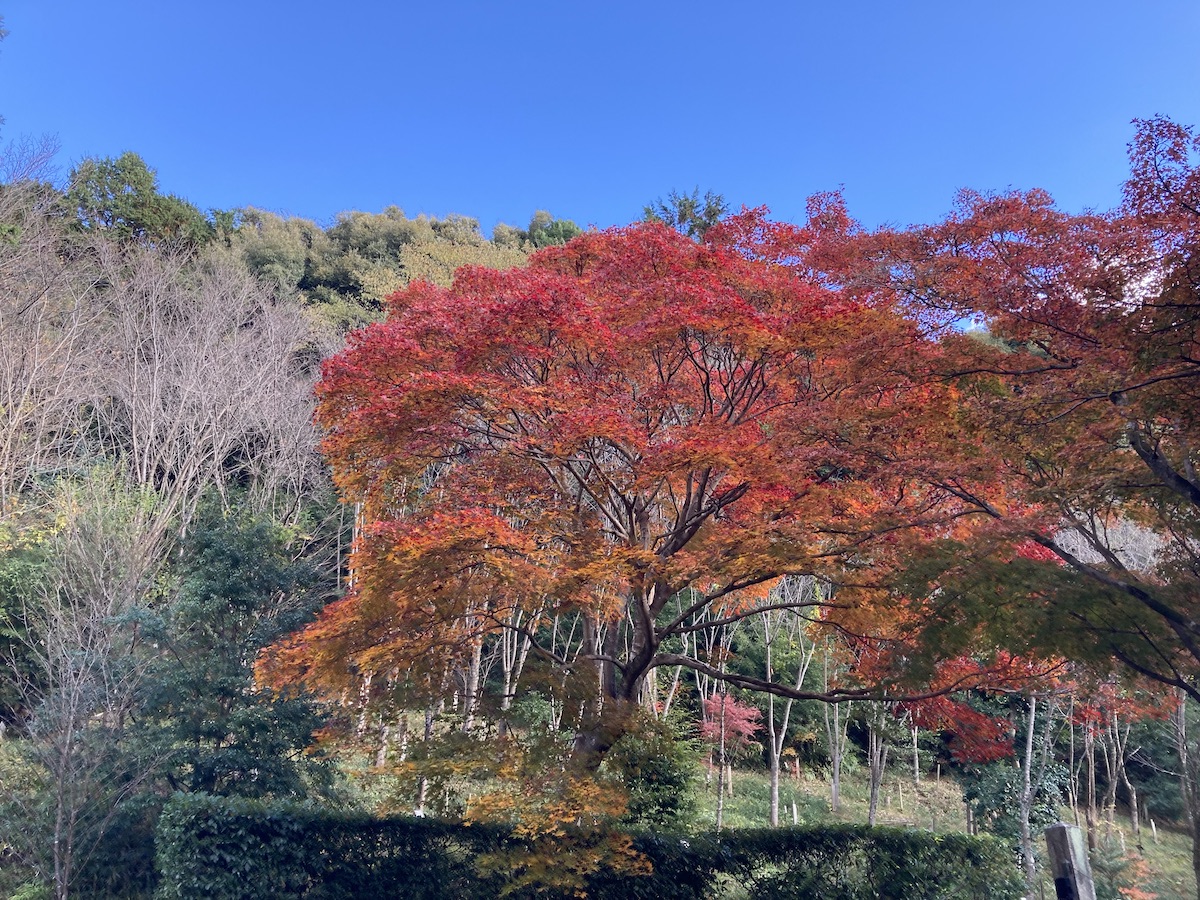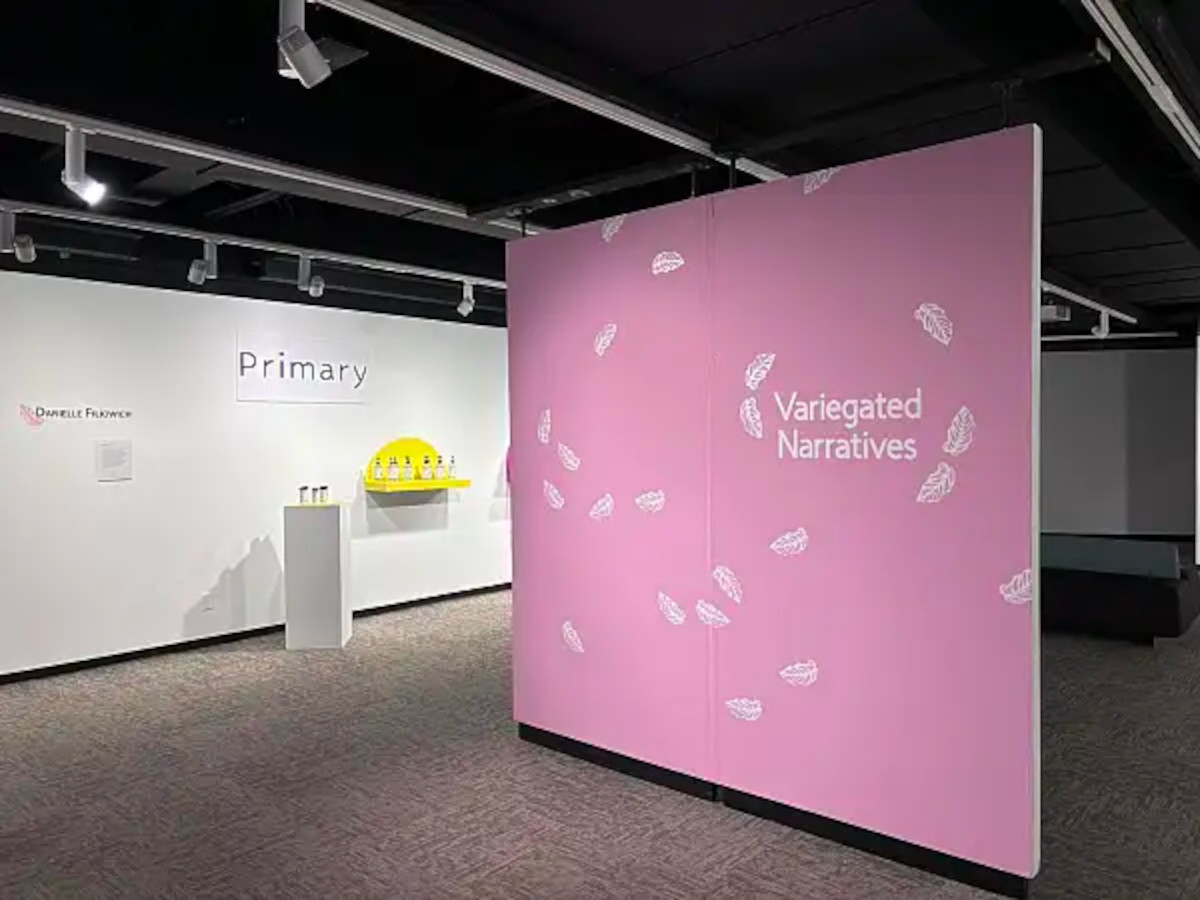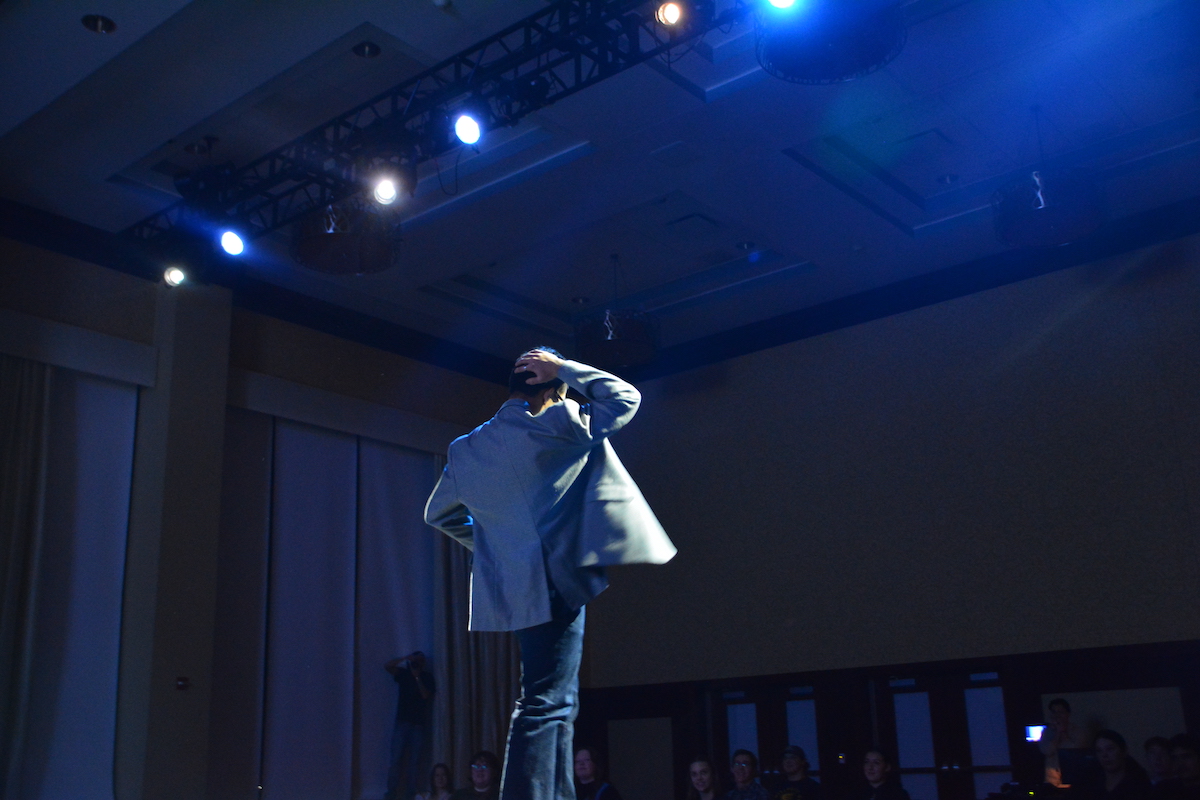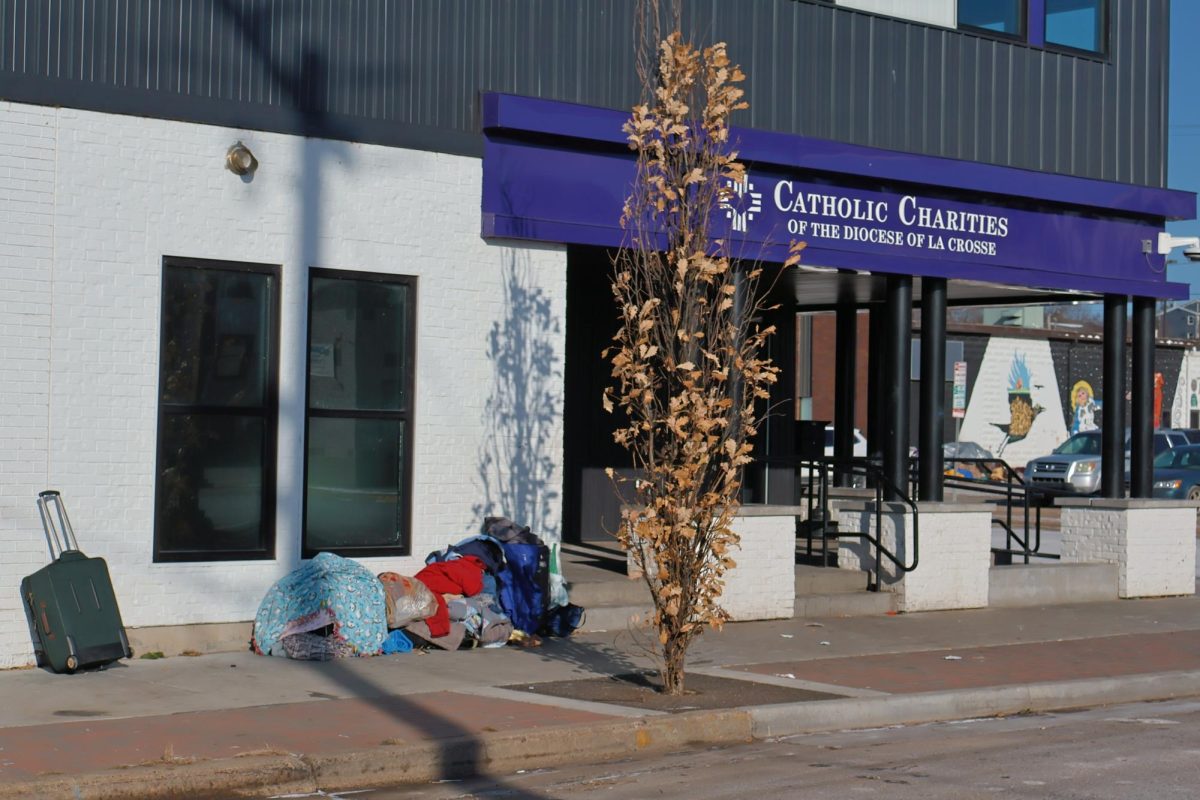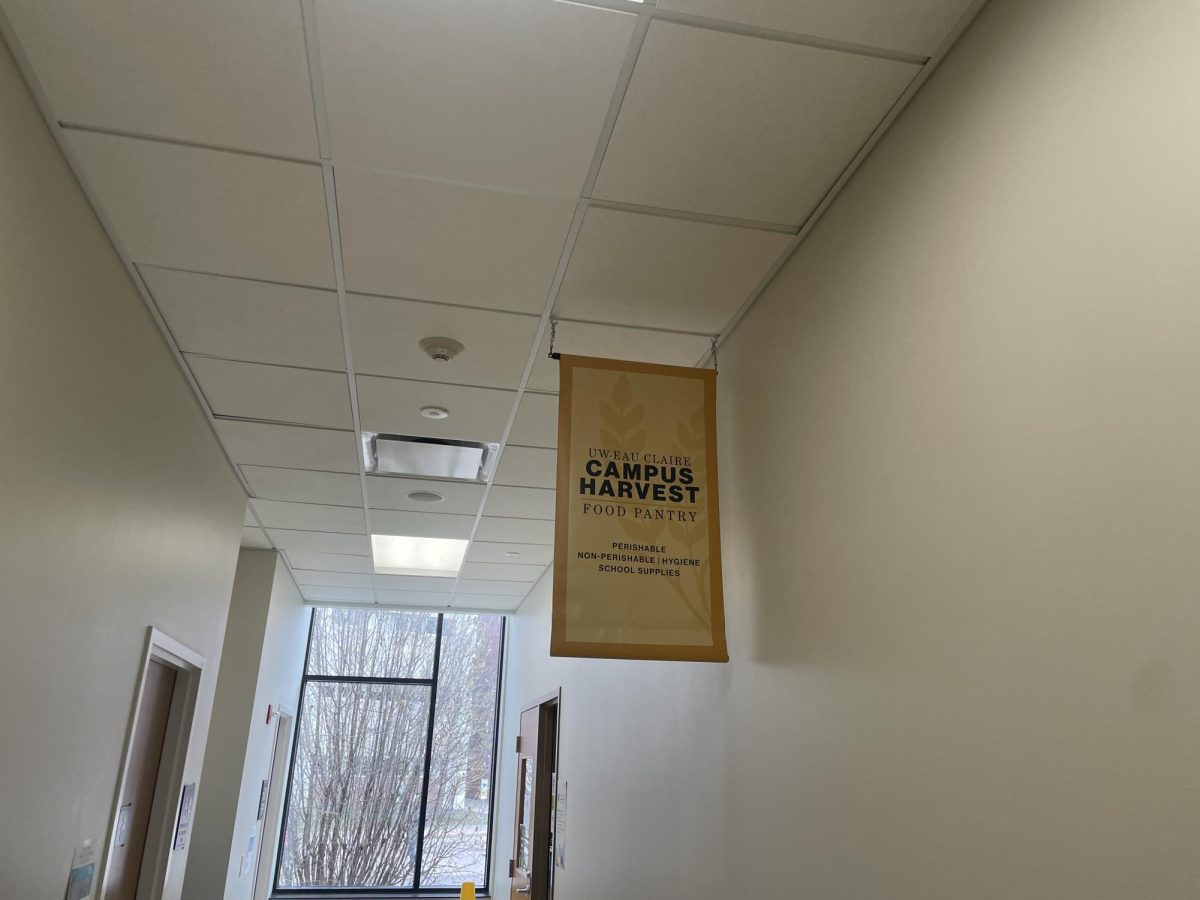In a daring balance of art and science, world-renowned photographer, James Balog, took audiences on a dangerous and breathtakingly beautiful adventure across the glaciers of Greenland, Alaska, Montana and Canada to watch the glaciers disappear.
Climate change has been a highly disputed topic for the past decade, but “Chasing Ice,” directed by Jeff Orlowski, provides visual, “indisputable evidence” on the issue. Balog set up cameras all over glaciers in the northern hemisphere to record, through photography, the glaciers diminishing for nearly a three-year period.
Originally debuted in Nov. 2012, this documentary premiered on the UW-Eau Claire campus on March 4, sponsored by the Student Office of Sustainability.
The film begins with Balog’s love of photography and science and finding a way to bridge the two. After photographing glaciers for a National Geographic article, Balog became invested in climate change and the effect it is having on glaciers. Using time-lapse photography, he is able to show the audience tangible affects climate change is having on glaciers.
The film has received 23 awards from festivals around the world including Excellence in Cinematography Award: US Documentary at Sundance Film Festival, according to the “Chasing Ice” website.
Senior biology major Casey Gabrhel attended the movie to see the evidence of climate change for himself.
In classes, Gabrhel learned 97 percent of the scientific community believe climate change is a fact. Professor of economics Eric Jamelske stated during the discussion after the film,that his research has suggested 50 percent of college students believe there is a disagreement within the science community about whether or not climate change exists.
Senior Justin Gonyer, a chemistry major, said this misinformation is exactly why students and community members need to see the film. Gabrhel said it is frustrating to see three percent of scientists have such an effect.
“The important thing is getting the public to see what goes into the research behind it and why it matters and how in depth it is,” Gabrhel said.
The documentary showed the glaciers receding at an incredible rate and how there is no way that it is a purely natural occurrence.
Balancing the topics of rising temperature, historical and present day carbon dioxide emissions and glacier melting, Balog creates a convincing argument for why the time is now to take action against climate change.
Gonyer said he came to see the film for personal interests as well as encouragement from chemistry professor James Boulter.
“The visuals are just amazing,” Gonyer said. “When you start putting that in perspective, how far (the glaciers) are actually receding and you actually see that happen over a period of time, it really hits home better than just saying ‘ice is melting a hundred inches, a hundred feet.’”
Gonyer said the science of climate change can become hard to understand so having real, visual evidence for the decline of glaciers makes the issue more difficult to ignore.
Boulter led the discussion about climate change after the film. He was thrilled with the over-capacity turnout for the film viewing and the participation of audience members in the discussion.
“I think this film drives that home in a way that is different than what we have seen before,” Boulter said. “The visual element, I think, is very potent in being able to communicate the scale of what is going on and the immediacy of what is going on.”
GRAPHIC BY TYLER TRONSON / The Spectator

